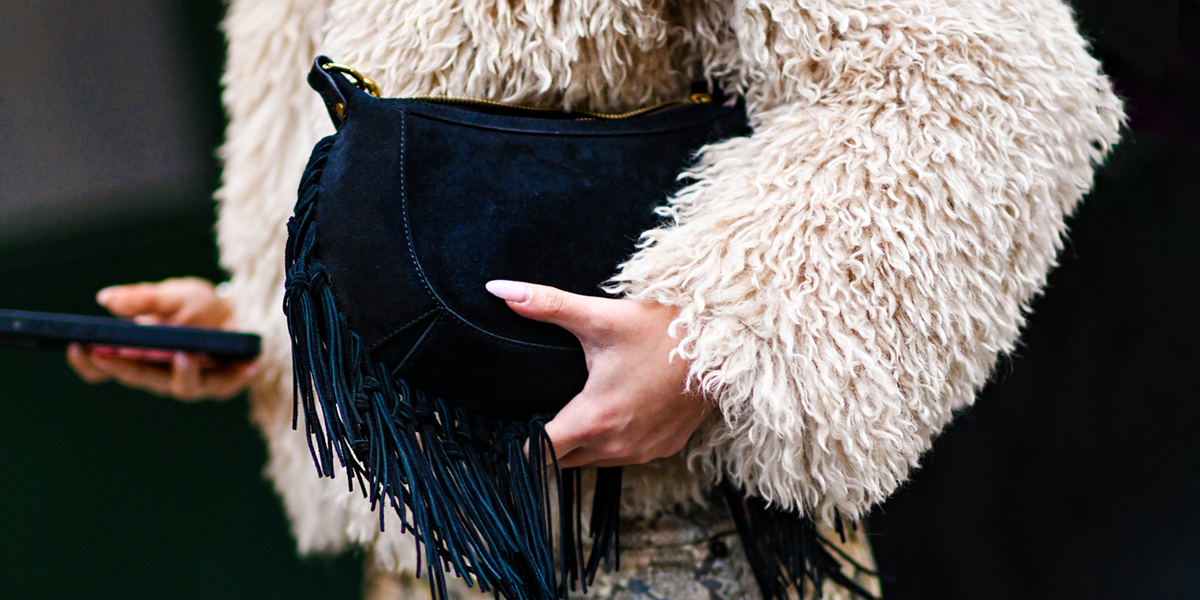World
Magazine guru Lindsay Nicholson’s life of turmoil: ‘I could see this world I’d created was crumbling’

In 2016, Lindsay Nicholson was driving home to Berkhamsted in Hertfordshire from her mother’s house in Essex. It was a Sunday night and her thoughts were all for the week that stretched ahead. Nicholson was then the editor of Good Housekeeping, Britain’s biggest-selling glossy magazine, and as usual her diary was bulging: lunches, interviews, photoshoots. Not that this troubled her. Quite the reverse, in fact. She loved her job uncommonly, not only because it was interesting and fun and she was very good at it, but because it had long been her refuge: the best way she knew to avoid thinking about other, more difficult things. As her BMW joined the Southend Arterial to a soundtrack provided by Magic FM, she was all anticipation, her mind as expectant as the white damask tablecloths at Claridge’s, the hotel where she would regularly meet important advertisers for tea.
But then something happened. A lorry up ahead crossed suddenly into her lane, and not in the usual way. It was at a right angle to the road, the container behind its cab slaloming in a balletic arc that would henceforth be for ever imprinted on her mind. All she could do in the next split second was to brake, hard, and aim for the central reservation, hoping desperately that the drivers behind her would manage to stop themselves without hitting her. What was going on? Why had the lorry, the side of which was now about to fill her windscreen, pulled out? Only later would she learn that a man had tried to kill himself by running in front of it. He would spend the next six weeks in hospital, but like everyone else involved in the accident, he would live to fight another day.
For Nicholson, though, life was about to change irrevocably nonetheless. For all its high drama, this crash was akin to a stone dropped coolly into a lake. Falling there, out of the blue, it disturbed what lay beneath the surface of the water, its effects rippling ever outwards. Triggered by the crash, past trauma, long repressed, rose up to destroy her peace of mind at precisely the same moment that the present began to conspire ruthlessly against her. By the following August, little would remain of the future she thought she had.
As a younger woman, Nicholson had lost her husband, John, and nine-year-old daughter, Ellie, to the same blood cancer (she wrote a book, Living on the Seabed, about her grief, and has often spoken about it). She had also survived breast cancer – terrifying to her, because why wouldn’t she die too? In the 10 months that followed the crash, she would lose her second marriage, her home and her job. The perfect binding of her life (“perfect bound” is the technical term for the pages of glossy magazines, stuck together with glue rather than staples) would come apart so completely that there were days when it ceased to have any meaning for her.
Today, Nicholson still lives in Berkhamsted, in the house that she lost, and then, eventually, won back, and I must admit that I was curious to see it. In her new memoir – called Perfect Bound – this converted printworks with its resin floors and canalside views induces in the reader deep suspicion from the off; when Nicholson’s husband tells her it’s their for-ever home, his plans for its renovation becoming ever more elaborate, you long for her to run straight back to London. But now I’m here – having walked from the station past weeping willows, old-world pubs and beautifully maintained locks, I’m at her kitchen table listening to birdsong and the sound of a bicycle bell on the towpath – I’m struck less by its Grand Designs glamour than its impersonality. It stands aloof somehow, as if Nicholson is only visiting.
How does she feel about it? Doesn’t it remind her too much of the past? “There were mixed emotions when I first came back,” she says, her hands around a mug of tea. “It was a horrible feeling. But that’s why I got my friend, Angie, to do the shamanism I describe in the book. I’m not particularly into shamanism, but the ritual really, really helped.” She gestures at a terrace, a place usually reserved for spotting kingfishers or drinking a sundowner. “That’s where we threw my costume jewellery into the canal,” she adds – and again, I think of ripples. Somewhere in the murk and the mud lie the broken statement necklaces and partnerless earrings Angie said would stand as a commemoration of Nicholson’s time here, waiting to be discovered by curious future generations.
Perfect Bound is unputdownable, its unfolding calamities horribly transfixing. But I hardly know where to begin when it comes to talking about it. So much happens; a lot more than one person should have to bear in a single lifetime. Perhaps, then, we should just start where she does – with the crash. Does she feel, now, that if she hadn’t been on that road on that day, life would have been very different? Or is it the case that, in the end, something else would have come along to derail her? She nods. “Yes, absolutely that. The crash exposed all the flaws [in my life]. I kept trying to put everything back together, but it all kept going wrong. I needed to slow down, to stop and take a good look around me, so I could see that this world that I’d created, which very much belonged to the pages of my magazine, was crumbling.”
Nicholson had always been a workaholic. When her husband, the Observer journalist John Merritt (they met as trainee journalists in Plymouth), died in 1992, aged 35, she became a single mother to two small daughters; on a practical level, she had no choice but to work, supported by, among others, her close friends Alastair Campbell and his wife, Fiona Millar. But after Ellie died six years later, something else drove her to the office, whether she admitted it to herself or not. “The things I didn’t want to face up to were so awful. It would have been very hard to think about them…” Instead, she focused her mind on other, more cheery matters: the dreams of her avatar, Claire (GH’s ideal reader); her many cover stars (Nigella Lawson, Helen Mirren, Julie Walters); the perfect Christmas dinner (mince pies shot in the heat of summer). Incessant deadlines allow little room for self-pity, let alone for what people call self-care.
On the day of the crash, Nicholson rang her husband: the man who had lovingly nursed her through cancer; who only a month before had told guests at her birthday party: “This woman changed my life. I love and adore her.” Her car was totalled. Her expectation was that he would rush to her side and bring her safely home. But this was not what he did. Although he called a recovery truck, it was left to Nicholson’s younger daughter, Hope, to rescue her – and in shock, she didn’t stop to wonder why. When she woke up the next day, he had already gone to work. Badly shaken, Nicholson stayed at home, but by Tuesday she was back in the office herself, writing cover lines for her January issue (Jamie Oliver was on the cover, decked in red and green fairy lights).
Her insurance company refused to replace her flashy car, but the repairs that were carried out were inadequate. Thanks to this, barely three months later, in January 2017, she had another accident, losing control of her vehicle so that it fell into a ditch in the Lake District. Again, her husband – an estate agent, she met him in 2003 when he valued her house – was unresponsive, failing to reply to her panicky text until the next morning. He had recently taken up cold water swimming, at which he was extremely proficient (he’d already swum the Channel), and was training on the south coast; his phone had been switched off, he said. But could this really account for his seeming distance? By now, Nicholson was having terrible, crash-induced nightmares: dreams so grim and bloody that, once awake, she could only curl herself into a ball and wait in terror for morning. (In the coming months, she would begin to have thoughts of suicide.) She had enough to worry about without imagining problems in her marriage. Carefully, she put the thought to one side.
“I had shut down,” she says. “The two crashes… the trauma.” She would later be diagnosed with PTSD, a condition that can be traced back to the deaths of John and Ellie. “But I was very locked in [to the marriage]. It was a rubber stamp for me.” She tries to explain. “He and I [her second husband] married quickly, within a year, because I wanted this perfect life: for me, for Hope, for all of us. He was so kind, and I don’t know what would have happened when I was diagnosed with breast cancer – we’d been married for two and a half years then – because Hope was only 14, and she was in a terrible state, thinking she might lose me too. Afterwards, I thought: thank goodness you did marry him; this really is the right thing. The box was ticked. I went back to work [after my illness]. Hope was doing well, we lived in a beautiful house, everything was fine. I told myself: don’t think about anything bad ever, ever again.”
Over the course of the next years, things changed for all of them. Hope went to university, Nicholson and her husband moved to Berkhamsted, and magazines, under threat from the internet, began to go a little crazy: “I had to think about digital all the time.” But till the last, she had “sufficient evidence” to believe that her husband was devoted to her: “That incredible speech, telling 100 people he loved me…” She points to a sculpture. “He bought me that art deco statuette for Christmas. I was getting enough reinforcement.” Nicholson was brought up as a Catholic. “Marriage was for life. You know people go through rough patches, but they come through.” Thanks to all these things, she just wasn’t “reading the signals”.
But at some point the signals became too loud to ignore. Four months after the crash, with her husband seeming excessively preoccupied with his mobile phone, she accused him of having an affair. She asked to see his phone, he refused to let her, and as she tried to grab it, it fell to the ground. She asks me to follow her into the sitting room. “It broke on the floor, just there,” she says, as if contemplating a crime scene. “I was so shocked. I’d sort of believed that maybe he’d just been flirting, or that he would say, ‘I’m so sorry, I’ve made a terrible mistake.’ But he picked up the landline and rang the police.” Good Housekeeping had often tackled the subject of domestic violence, but she realises now that she didn’t know the half of it. “If you’re a woman and you ring the police and say my husband has broken my mobile phone, I don’t think you get two police cars with flashing lights turning up.” She was taken to the station, where she was held in a cell for the next 16 hours.
“At that point, the subconscious world of the flashbacks and the nightmares merged with the conscious world of being locked up,” she says. “There was no separation between them. Everything was a sort of horror, a nightmare.” When she was finally released without charge, the police and the duty solicitor asked where she would go. “Home,” she said. To her astonishment, they advised against this. “They told me: ‘He could do it again, and if that happens, it’ll be a different shift, and you’ll have to prove yourself again.’” So she went to her mother’s instead, Hope having helped her pack a bag. Although she’d done nothing wrong, she was bathed in shame. “It was four years before I told my mother where I’d been.”
Her husband now took full possession of their resin floors, changing the locks of the house. The only way to get inside it again, according to her solicitor, was to seek an occupation order, which would cost thousands of pounds, and which she might not win in any case. She decided to rent a house instead, where she would live until her divorce came through (there was no going back on that score now). But still trouble kept coming. Her landlady issued her with a Section 61 order (she was selling and terminating the lease), and the National Magazine Company, then owner of Good Housekeeping, restructured and made her redundant. No longer able to afford to rent, and fraying mentally, Nicholson now had no choice but to fight for the occupation order – which she won.
But minus her job she was untethered: nowhere to go, nothing to do, no one relying on her. In her memoir, she writes of her drinking and her depression, of all the days she spent without getting dressed, and then of her various efforts to get her life back on track: pills, therapy, the process known as EMDR (eye movement desensitisation and reprocessing) for her trauma. And in the end, she succeeds. Sanity, if not salvation, comes – isn’t this very Good Housekeeping? – when she buys a horse and begins volunteering for Riding for the Disabled; new contentment and purposefulness arrive with the birth of her granddaughter, Cora, to whom Perfect Bound is dedicated. Nicholson’s idea of perfect happiness is no longer a flying visit to New York to conduct a celebrity interview; it’s to sit on the floor with Cora, smelling her head and looking at her tiny feet. Although her PTSD will never disappear, she’s able to be honest about it these days. Finding herself by accident in Great Ormond Street recently, where Ellie died, she had a debilitating panic attack. But when she arrived at the restaurant where she was meeting friends, she explained why she was late. Once, she would have said nothing.
Her memoir’s optimistic ending is important to the way it works. But I would also say that books, like magazines, do not always tell the full story. I’ve read hers and yet, somehow, I can’t quite make sense of it. What does it all mean? I wonder, still, about her husband, and why he called the police – one of the few things that have happened to her that someone (him) could have controlled. And I can’t help but think that what she has been through seems wholly to negate the glib messages (12 Easy Steps to Happiness! Our Guide to Living Your Best Life!) espoused by the kind of magazines to which she gave her whole self for so long. If there’s wisdom in her book, it is so agonisingly hard won, I struggle to find comfort in it.
I try to get her to talk about this. When it comes to magazines, she isn’t cured. “I love them,” she says. “I’m such a fan, and I don’t regret any of what I did. Magazines are information packaged within a dream, and I think the people who make the best editors are the people who believe most strongly in that dream, which I did.” It’s hard to be a young woman now, she thinks: magazines were “about community”, but social media turns women into competitors. “I didn’t want the old life to end. I really loved it, and I think there could have been some kindness [from my husband] towards me at the end, which would have made things better. But I cannot believe what my life is like now.” This, she insists, is her third act. “There was life before John and Ellie were ill, and then there was dealing with the aftermath of that, into which I’d put my second marriage, and then there’s where I am now.” (Hope, incidentally, is back in touch with her stepfather, but he and Nicholson are not in contact at all – and no, she still can’t account for the fact that he called the police.)
For the first time in a long time, she is fully present. “I never used to be tired. I never used to be hungry. My shoes never hurt.” She laughs. “But now I feel all those things. I actually don’t mind that my marriage ended, or even that I was made redundant. I feel incredibly grateful that I survived the crash, and that I was given a second chance at life. I’ve turned into a bit of a gratitude bore. I just feel a bit: do you see how beautiful flowers are? Do you know that music can make you cry? It’s tedious really.” None of this, however, means that her voice isn’t full of nostalgia when she tells me a story (she knows it’s ridiculous) about going to meet Evelyn Lauder (of Estée Lauder) at Claridge’s when she was still at Good Housekeeping. Nicholson couldn’t walk there because her heels were too high (she travelled the half mile in a vintage Roller). She couldn’t eat a slice of cake, or even a teeny sandwich, because Evelyn was watching. And Evelyn had a nervous breakdown when her mint tea was poured because, although it was palest yellow, it looked a bit on the strong side. (When she’s finished, we both laugh, perhaps a bit too uproariously.)
In Perfect Bound, Nicholson goes into great detail about everything it takes to put a good women’s magazine together, from the editor’s letter to the smallest subheading. Before I leave, I ask her, if her book was a magazine, what message she would want it to convey. What, for instance, would her avatar, Claire, make of it? She smiles. “Well, Claire has died, sadly,” she says. “But what I’m saying is: today, you think everything is terrible. You imagine that your life is over; that you’re too old and too out of things to ever put it right. But you’re not. Go for a walk, or cook yourself a meal, or find some volunteer work – and things will come your way that you never dreamed of.” I can’t tell the degree to which she means what she says. Nicholson’s voice is neutral; we’re only a hair’s breadth away from saying that what doesn’t break you makes you stronger, something I’ve never believed to be true. But I’m so in awe of her strength and resilience and courage: if the wish is the father of the thought, that’s fine by me.
-
Perfect Bound: A Memoir of Trauma, Heartbreak and the Words That Saved Me by Lindsay Nicholson is published by Mudlark (£20). To support the Guardian and Observer order your copy at guardianbookshop.com. Delivery charges may apply









